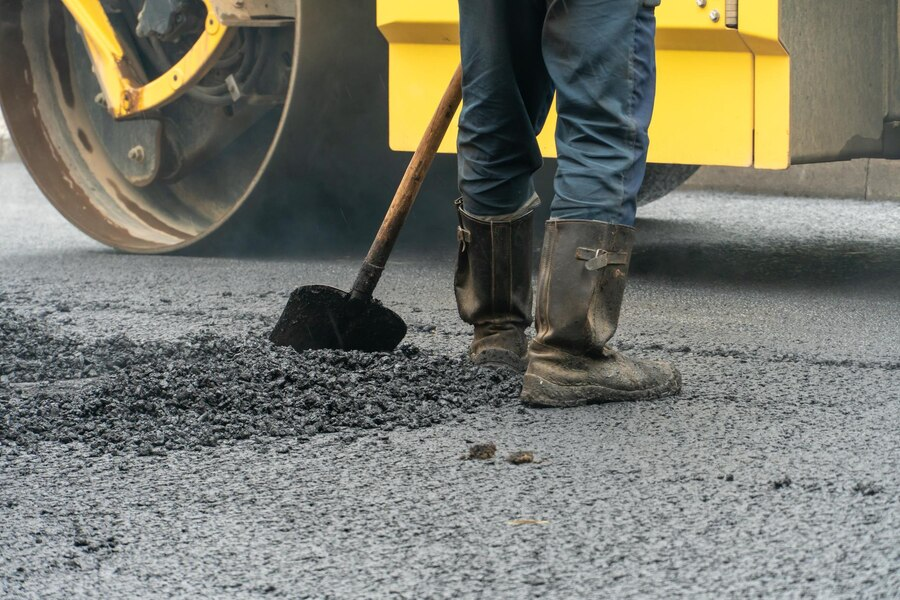Ultimate Guide To Asphalt Paving Effectively In Vancouver
Asphalt is durable, resilient and low maintenance and paving your driveway with it can last more than 15 years. While the process of installing asphalt may not be complex, there are many things that homeowners aren’t aware of.
Although proper asphalt installation requires heavy equipment, which you may not have, it’s crucial to understand the process to ensure the hired contractor does it correctly. Asphalt is of three basic types: hot mix, warm mix, and cold mix. Whatever type you plan to install, each blend has its own unique benefits and cons that are best suited for specific purposes.
To achieve excellence, here is a step-by-step overview of what asphalt installation requires to create a beautiful paved surface.

1. Demolishing and Removal of the Current Surface
Before you begin your Vancouver paving project, evaluate your road base to determine the best option. This piece focuses on the most preferred method of laying on a subgrade failure or no base rock space. Here, you install a new aggregate base of 6-8” deep. You need to identify the area where you intend to lay your pavers, but ensure it has a slope to allow water to drain from it.
After assembling the tools and materials, the first step in asphalt installation is to remove the existing asphalt, concrete, or paved surface using excavators. The surface must be completely clean and clear of all debris, with no grease or oil stains, before continuing.
2. Grading And Sloping
Since water is a major cause of asphalt damage and degradation, this is a critical step. During this process, the driveway surface is graded (flatten the surface to achieve the desired gradient). Sloping is done so that water runs off the sides or bottom. Proper water drainage is essential to keep the asphalt driveway free of potholes, cracks and other associated damages.
The ideal slope is a quarter of an inch per foot (0.635 cm per 30.48 cm). If your location experiences extremely low temperatures, adding a frost protection layer at this step is significant to prevent damage to the asphalt driveway due to frost heaves formed when groundwater freezes. If there are low and soft spots, fill them with engineered fill and compact them firmly.

3. Prepare The Sub-Base
Correct preparation of the base rock is the most vital part of your paving project. The sub-base comprises an aggregate rock material, which offers a stable surface to support the new asphalt and act as a frost barrier to reduce damage during freezing or thawing.
The amount of aggregate base you install depends on the composition of your underlying soil. If your soil is clay-based, you should install about 8” of crushed rock. If the soil is sandy, you’ll need at least 4”.
As the aggregate base is installed, ensure the rock is disturbed evenly and that it’s compacted with a roller into the subsoil to achieve stability. Ensuring a solid baserock section is critical to a high-quality finished product, thus you can allow the base to settle for approximately a week if you’re not time limited.

4. Installation of New Asphalt Surface
Once the supportive base rock is in place, the new asphalt surface is installed. First, you choose the size of the asphalt you want to use. For example, residential driveways usually use 2-3” thickness for a smoother appearance, while commercial driveways are 4” thick.
For the project to be smooth and compact the surface as you lay the asphalt, using equipment like rented asphalt pavers or rakes, shovels and plate compactors. Professionals use heavy machinery like a massive roller to apply the asphalt.
Remember to make a smooth transition from the old to newly paved surfaces to existing surfaces, like walkways, driveways, roadways and parking lots, and ensure that grading and run-off are appropriate.
Rolling the surface smooths the asphalt and achieves the proper densities for asphalt to withstand vehicular traffic. To avoid mistakes in the asphalt paving process, you should roll the surface at the correct temperature.

5. Final Sealing
After the new asphalt surface is fully cured, approximately three to twelve months, it is recommended to seal it to prevent wear and tear, safeguard the surface, and avoid water drainage issues. This, in the long run, saves you money and avoids unnecessary repairs. Moreover, asphalt paving also stay protected for a long time.
Conclusion
Asphalt paving can be a fulfilling and cost-effective way to enhance your property’s functionality and curb appeal. However, hiring a professional contractor will save you the hassle of hiring the needed equipment for the project.
But if you have the skills, by following these steps and investing time in proper planning and execution, you can achieve professional-quality results with your asphalt paving project.


